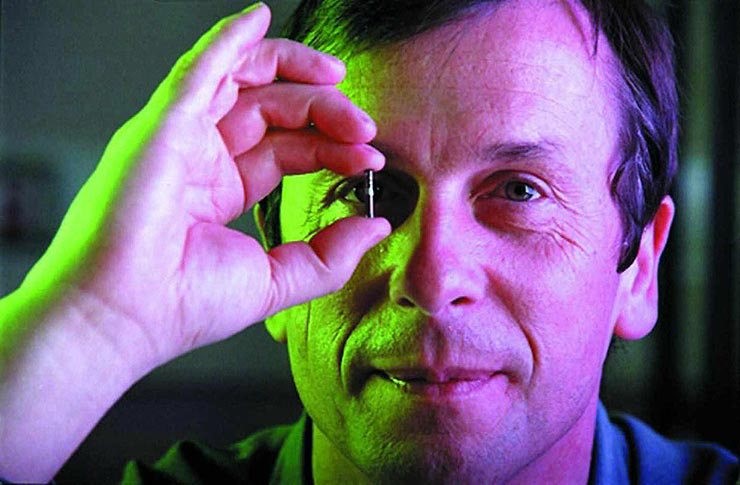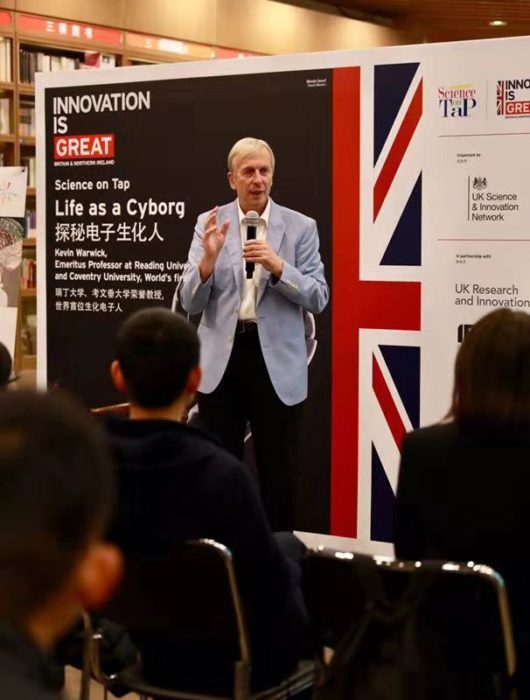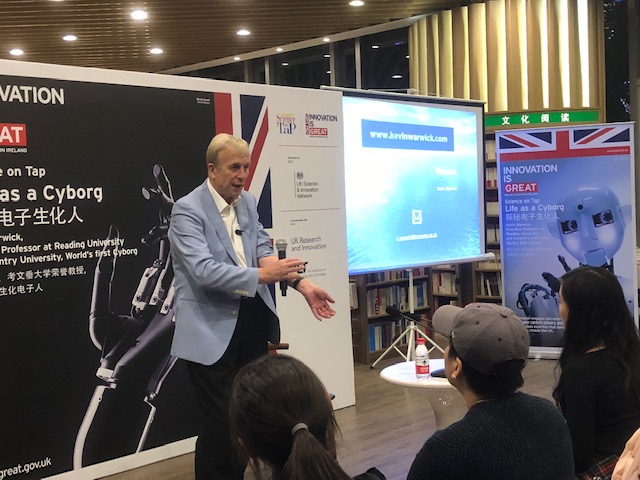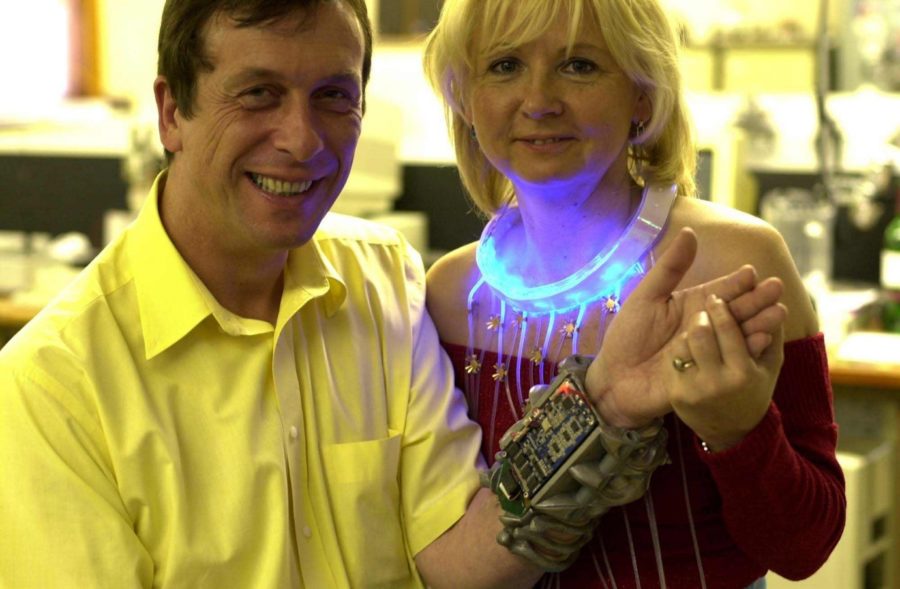5th December 2018 beijing
When the World’s First Human Cyborg Came to Town!

Many of us have seen sci-fi films like Avatar and Pacific Rim where humans control robots by moving their own bodies. Well, this might not only live in fiction!
The Science and Innovation Network (SIN) in the British Embassy Beijing had the honour of inviting Professor Kevin Warwick – also known as the World’s First Cyborg – to present a Science on Tap talk.

Science on Tap is a China Network-wide campaign, delivering fun, accessible and informative public lectures by high-profile and engaging UK academics on a variety of topics relevant to UK-China science and innovation collaboration. This event had huge media impact, with livestreaming reaching over 1.14 million viewers across 32 provinces.
Some of you may know Professor Warwick’s research. He is an Emeritus Professor at Reading and Coventry Universities. His main research areas are artificial intelligence (AI), biomedical systems, robotics and cyborgs. His research has been used to help patients with Parkinson’s disease using brain stimulation. Due to his a ‘self-experimentation’ he is frequently referred to as the World’s First Cyborg.
As the UK set out AI & Data, Ageing Society as Grand Challenges in the Industrial Strategy, the UK and China are natural teammates in exploring solutions to these global issues together. As such, AI is an important area for SIN to explore with China.
China’s State Council issued the ‘Next Generation Artificial Intelligence Development Plan’ last summer and this marked AI as a national-level design blueprint charting the country’s approach to developing AI technology and applications. By 2030, China will have an industry worth CNY1 trillion (GBP112bn) in AI. China has the world’s largest ageing population and will face challenges relating to providing healthcare. Current UK-China digital collaboration has the potential to e.g. transform the prevention, early diagnosis and treatment of chronic diseases.
Here is what we learned from Professor Warwick’s presentation:
Can a computer recognise you?
Professor Warwick had a silicon chip transponder implanted into his left arm that could directly interact with his nervous system and brain. This allowed him to interact with the surroundings as he walked through his former offices at the Department of Cybernetics of the University of Reading. ‘It would identify me to the computer in my building. As I walked around the computer knew it was me so it switched the lights on, and when I went towards the laboratory the door opened automatically’.
What does it mean to have ‘Cyborg Powers’?
Professor Warwick experimented on how signals can be sent between his nervous system and a computer. He had a BrainGate implanted into the median nerve fibres of his left arm, then plugged into a computer which monitored the nerve signals from his brain to his arms, receiving and transmitting them like radio waves. This enabled him to control a robotic hand across the Atlantic Ocean – whatever his hand did, the robotic hand copied with minimum delay in time.

What happens when there’s more than one?
The success of these experiments brought him to the next level, a cyborg partner – his wife Irena.
Professor Warwick bought his wife a ‘shiny present’ – a necklace that was electronically linked to his nervous system. When the colour of the necklace was blue, Irena would know that her husband was calm, when it changed from blue to red, that’s when the professor became excited.

Irena then added an implant of her own, a device which was inserted into her arm that connected their nervous systems together – this allowed Professor Warwick to study how emotional signals could be transmitted from one person to another.
They linked their nervous system to communicate using their brain signals. When someone grasped Irena’s hand, Professor Warwick’s brain would receive a pulse from the implant in his arm.
As a SIN officer, I feel proud to promote cutting-edge UK science to Chinese public. Through the Science on Tap Campaign, which was developed in partnership with UK Research and Innovation, with funding from the GREAT Challenges Fund, we are demonstrating that the UK is at the forefront of science and innovation.
To read more about Professor Warwick’s research you can visit his website at: http://www.kevinwarwick.com/

I am in the fantasy business I feel as I view the central nervous system is in symbiotic relationship with the locomotary body,of particularly humans. The theory means the brain gets protection whilst generating sense pictures. A hybrid with robotics means it is an extra level of complexity but as usual the predictive power of human brainpower satisfies the vision. How can God not be in the machine. The future was predicted and unsurprisingly we have sought to satisfy that prediction. eg blade runner.
Or Leviathan. We need a viewer from another part of space to give a true picture of ourself.